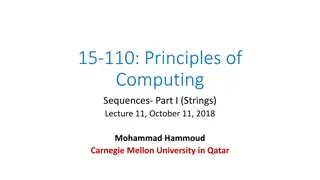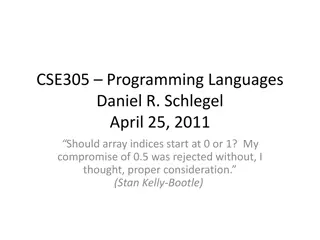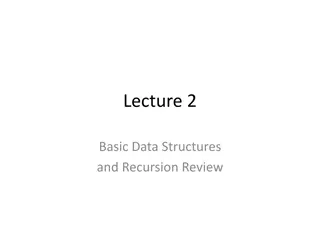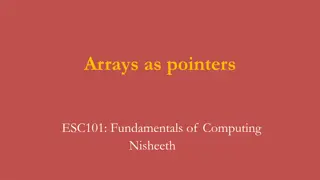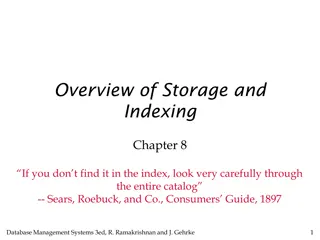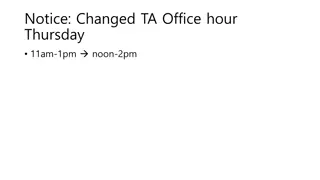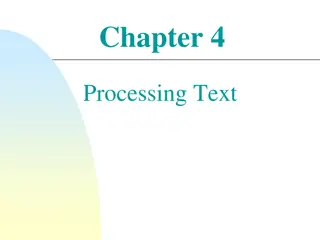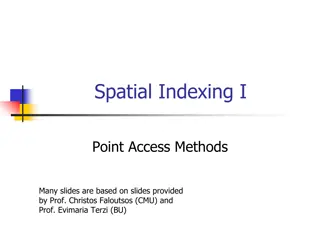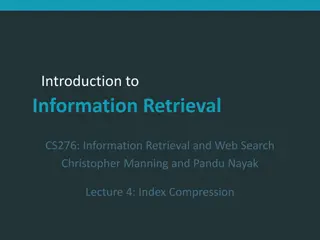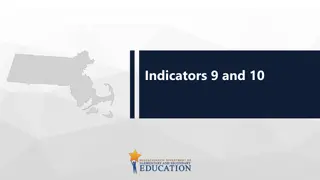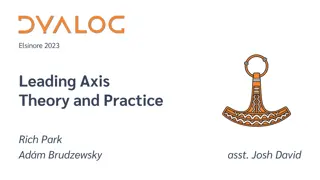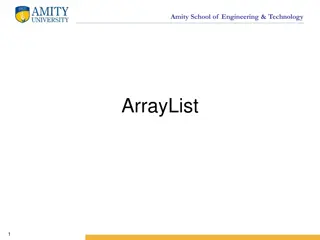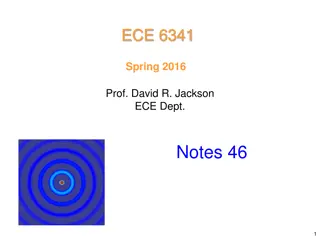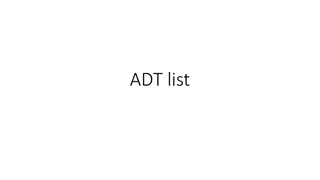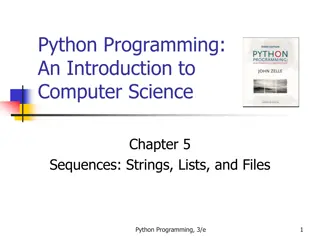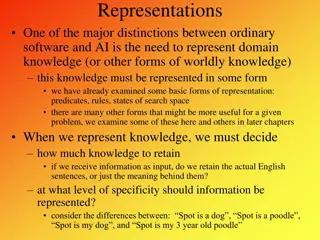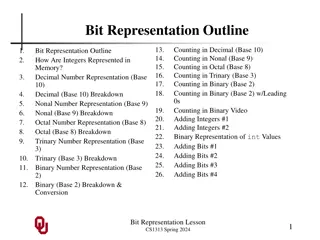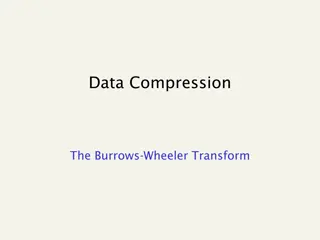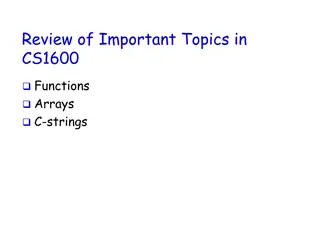Understanding Array Indexing and Representation
Visual guide explaining how arrays are indexed and stored in memory, including defining upper and lower bounds, determining array length, and denoting array elements. Example illustrations provided for easy comprehension of array concepts.
Download Presentation

Please find below an Image/Link to download the presentation.
The content on the website is provided AS IS for your information and personal use only. It may not be sold, licensed, or shared on other websites without obtaining consent from the author. Download presentation by click this link. If you encounter any issues during the download, it is possible that the publisher has removed the file from their server.
E N D
Presentation Transcript
Set PTR: = LINK [PTR] [PTR now point to the next node]
The elements of the array are reference representation by an index set consisting of n-consecutive numbers.
The element of the array is stored respectively in successive memory location. Number n of element is called the length or size of the array.
In general, the length or the numbers of the data element can be obtained by the index set of the formular:
LB = smallest index called Lower Bound of the Array.
The element of an array can be denoted by A1, A2, - - - - - -An
Let data is a six element linear array of integer such that:
DATA [1] = 247 DATA [2] = 56 DATA [3] =429
DATA [4] = 135 DATA [5] = 87 DATA [6] =156
This type of array data can be pictured in the form:
1 247 2 87 6 56 3 156 429 4 135 5 DATA
An automobile company uses an array AUTO to record the number of automobile sold each year from 1932- 1984
AUTO [K] = number of automobile sold in the years.
REPRESENTATION OF LINEAR ARRAY IN THE MEMORY
Let LA be a linear array in the memory of a computer. Recall that the memory of computer is simply a sequence of address location as in figure below;






